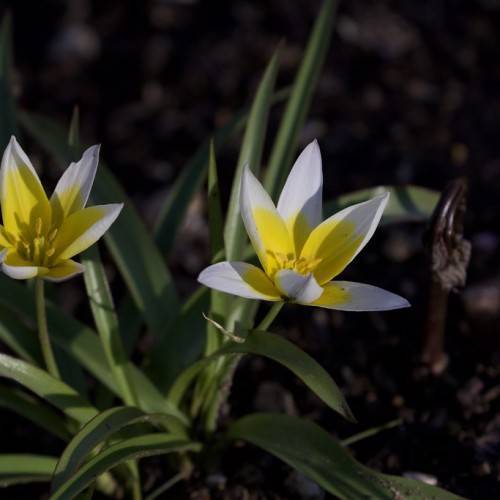
late tulip
Tulipa tarda
Cycle:
Perennial
Watering:
Average
Hardiness Zone:
3 - 8
Flowers:
Flowers
Sun:
Full sun
Leaf:
Yes
Growth Rate:
Low
Maintenance:
Low
Drought Tolerant:
Yes
Salt Tolerant:
Yes
watering
When watering late tulips (Tulipa tarda), water them when the soil is dry to the touch—about once a week. Increase or decrease the amount of water depending on the amount of rain received each week. When watering, give the plant enough water so that the soil is moist but not soggy. Too much water can cause the bulbs to rot. Allow the top inch of the soil to dry before you water the plant again.
sunlight
Late tulips require full sun throughout the day for best growth and blooming. In the spring and early summer months, they should be given 6-8 hours of sunlight each day. During the summer months, late tulips should be given 8-10 hours of direct sunlight to flower best. In the fall and winter months, late tulips should receive 4-6 hours of sunlight per day. Late tulips require protection from the midday sun to ensure their blooms last as long as possible.
pruning
When it comes to pruning late tulips (Tulipa tarda), it is best to do it immediately after they have finished blooming. To carry out the pruning task, remove the old leaves and flower stems right at the crown of the plant, making sure to not damage any of the new growth. When you've finished pruning the flowers, cut away the foliage and stems to approximately 3 inches from the ground level. This will help to prevent disease and remove any dead or decaying foliage from the plant, leaving plenty of room for new growth and flowers in the future. At the same time, only trim the foliage a few inches around the edge of the plant and not too much of the foliage in the center, leaving lots of foliage for photosynthesis to take place. Additionally, it is important to remove any dead or diseased foliage as soon as possible, as this can cause problems in your garden. If you are not sure what to do, it is always best to consult a professional gardener or horticulturalist.
